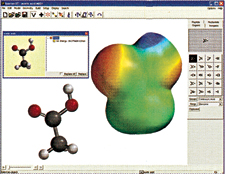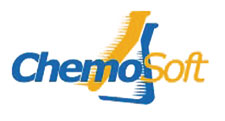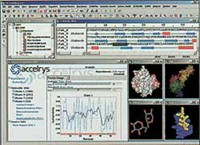Advertisement
Grab your lab coat. Let's get started
Welcome!
Welcome!
Create an account below to get 6 C&EN articles per month, receive newsletters and more - all free.
It seems this is your first time logging in online. Please enter the following information to continue.
As an ACS member you automatically get access to this site. All we need is few more details to create your reading experience.
Not you? Sign in with a different account.
Not you? Sign in with a different account.
ERROR 1
ERROR 1
ERROR 2
ERROR 2
ERROR 2
ERROR 2
ERROR 2
Password and Confirm password must match.
If you have an ACS member number, please enter it here so we can link this account to your membership. (optional)
ERROR 2
ACS values your privacy. By submitting your information, you are gaining access to C&EN and subscribing to our weekly newsletter. We use the information you provide to make your reading experience better, and we will never sell your data to third party members.
Physical Chemistry
Digital Briefs
New Software and Websites for the Chemical Enterprise
by Stephen M. Trzaska
April 9, 2007
| A version of this story appeared in
Volume 85, Issue 15
The following are some of the products that were on display at the exposition during the American Chemical Society's national meeting in Chicago.
Software
ACD/ChemSketch Version 10.0 is a chemical drawing package that enables users to draw molecules, reactions, and schematic diagrams; calculate physical properties; generate IUPAC names for chemical structures; and design professional reports. Version 10.0 extends its capabilities to include an updated dictionary, where the user can review more than 29,000 structures and 156,000 associated chemical names and synonyms along with the corresponding molecular structures of frequently used chemicals and biomolecules; an extended ChemDraw interface; and a new search tool for chemical structures within various document formats, including Microsoft Word and Excel and PDF files. ACD/ChemSketch 10.0 is also available in a freeware version that matches many of the features available in the commercial version. Advanced Chemistry Development, www.acdlabs.com
PCModel Version 9.0 provides full-scale molecular modeling and features easy input of 3-D structures. A substructure function allows for the creation of a library of commonly used substructures. A menu-driven structure input mode allows users to draw structures as they would on paper, as well as substitute, move, delete, and fix atoms in space. Hydrogens and lone pairs can be added or deleted at the touch of a button, and specific hydrogens can be marked as participating in hydrogen bonding or not. This version has an OpenGL graphics engine for improved graphics, several types of added force fields, and new interfaces with other molecular calculation programs. The software is available for Windows, Macintosh, and Linux. Serena, www.serenasoft.com
(1) ADF2006 is a density functional software package for computational quantum chemistry. It enables researchers to accurately compute reaction paths and molecular properties in different chemical environments. ADF can handle solvents, solids, proteins, transition metals, heavy-metal compounds, and electric and magnetic properties. The latest version features fragment support, easy building of inorganic compounds, QM/MM calculations on proteins, visualization of spin-orbit results, frozen-density embedding, and semiempirical dispersion correction. The software package is supported on Windows, Macintosh, UNIX, and Linux systems. Scientific Computing & Modeling, www.scm.com
HyperChem 8.0 is a molecular modeling suite that combines 3-D visualization and animation with quantum chemical calculations, molecular mechanics, and dynamics. The latest version introduces third-party interfaces, which allows the user to perform calculations with other software packages. Batch capabilities can be used to generate multiple number-crunching jobs whose output can be read later. Undo and redo options have been added. The geometric measurements function can find the angle between two planes, the distance of a point to line, as well as other capabilities. Chemical substituent tools; vibrational analysis; and calculations involving entropy and free energy, heat capacities, and rate and equilibrium constants are among many of the added tools. The software is Windows/Vista compatible. Hypercube, www.hyper.com
Palmtop
(2) Chemistry Labacus 1.3 is a laboratory informatics palmtop device for synthetic chemists that provides reaction drawing, stoichiometry calculations, and reagent look-up. Labacus allows users to sketch reactions with a stylus and to search from a database of frequently used chemicals. The latest version of this personal digital assistant has efficient 10-key data entry and allows quick navigation between experiments. Data can be automatically linked and integrated with desktop software, including ChemDraw and Excel. In addition, an efficient experimental procedure interface is currently in beta testing. Abacalab, www.abacalab.com
For Teachers & Students
Spartan Student Edition for undergraduate chemistry students uses molecular modeling software to explore general, organic, physical, and inorganic chemistry. The computational methods allow the exploration of numerous topics and properties, including bonding, thermodynamics and kinetics, reactivity and selectivity, atomic and molecular orbitals, and stereochemistry. Molecular builders allow easy construction of a wide variety of molecules. Transition states can be constructed from reactants using familiar nomenclature and an extensive library of common reactions. New features in the latest version include infrared spectra plots from calculated IR data, display of hydrogen bonding, inversion of chiral centers, automatic centering of molecules, and new search capabilities. Spartan is compatible with Windows, Macintosh, Linux, and UNIX. Wavefunction, www.wavefun.com
Stephen M. Trzaska writes Digital Briefs. Information about new or revised electronic products can be sent to d-briefs@acs.org.







Join the conversation
Contact the reporter
Submit a Letter to the Editor for publication
Engage with us on Twitter